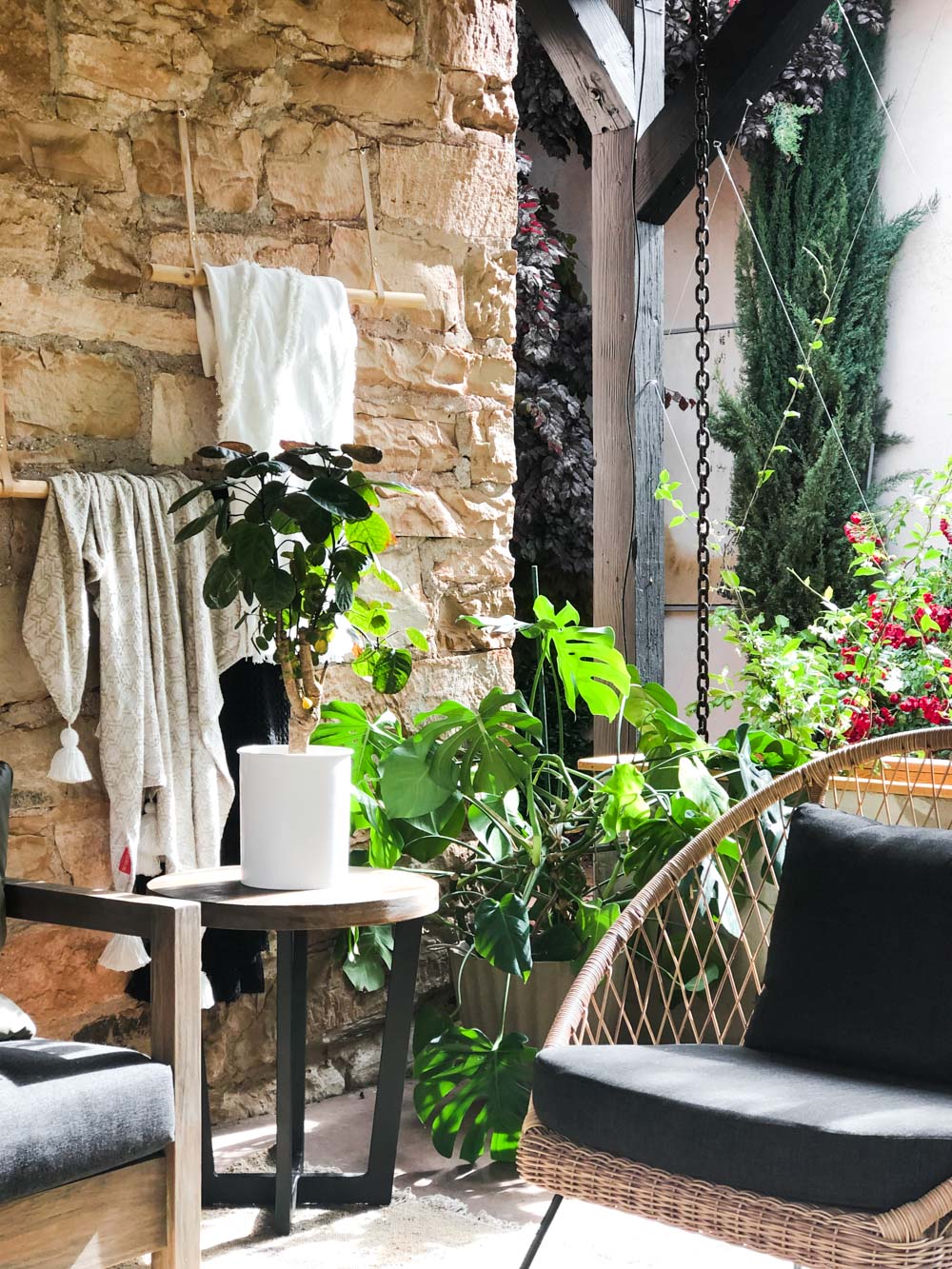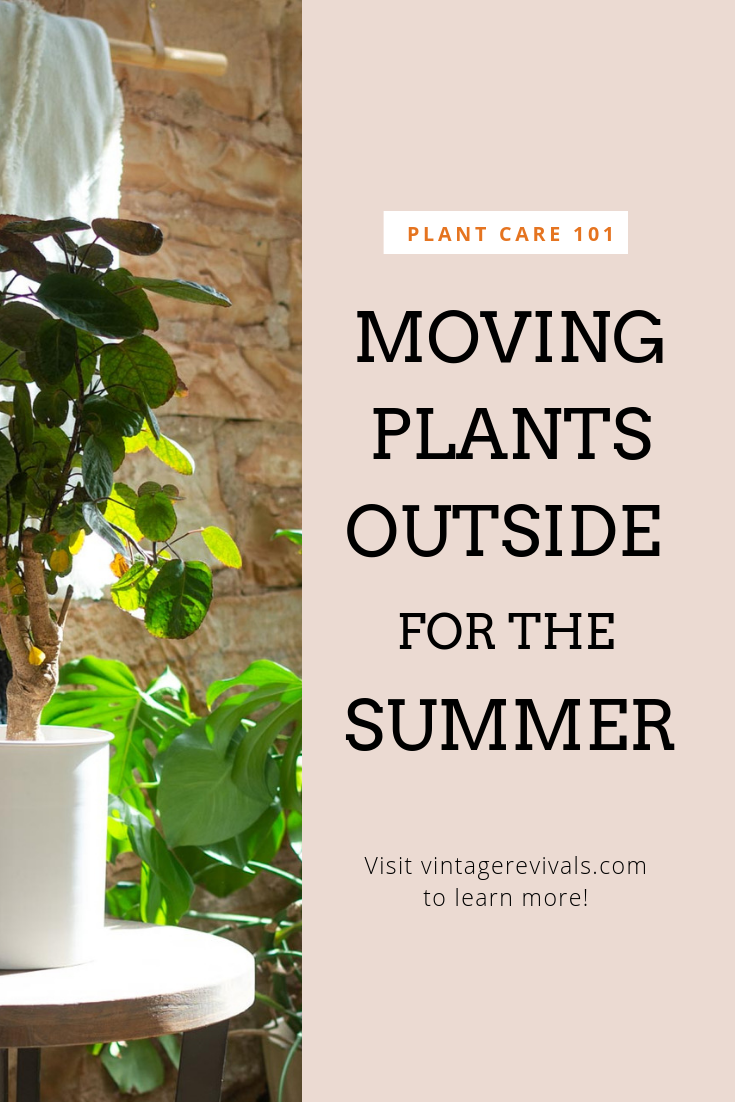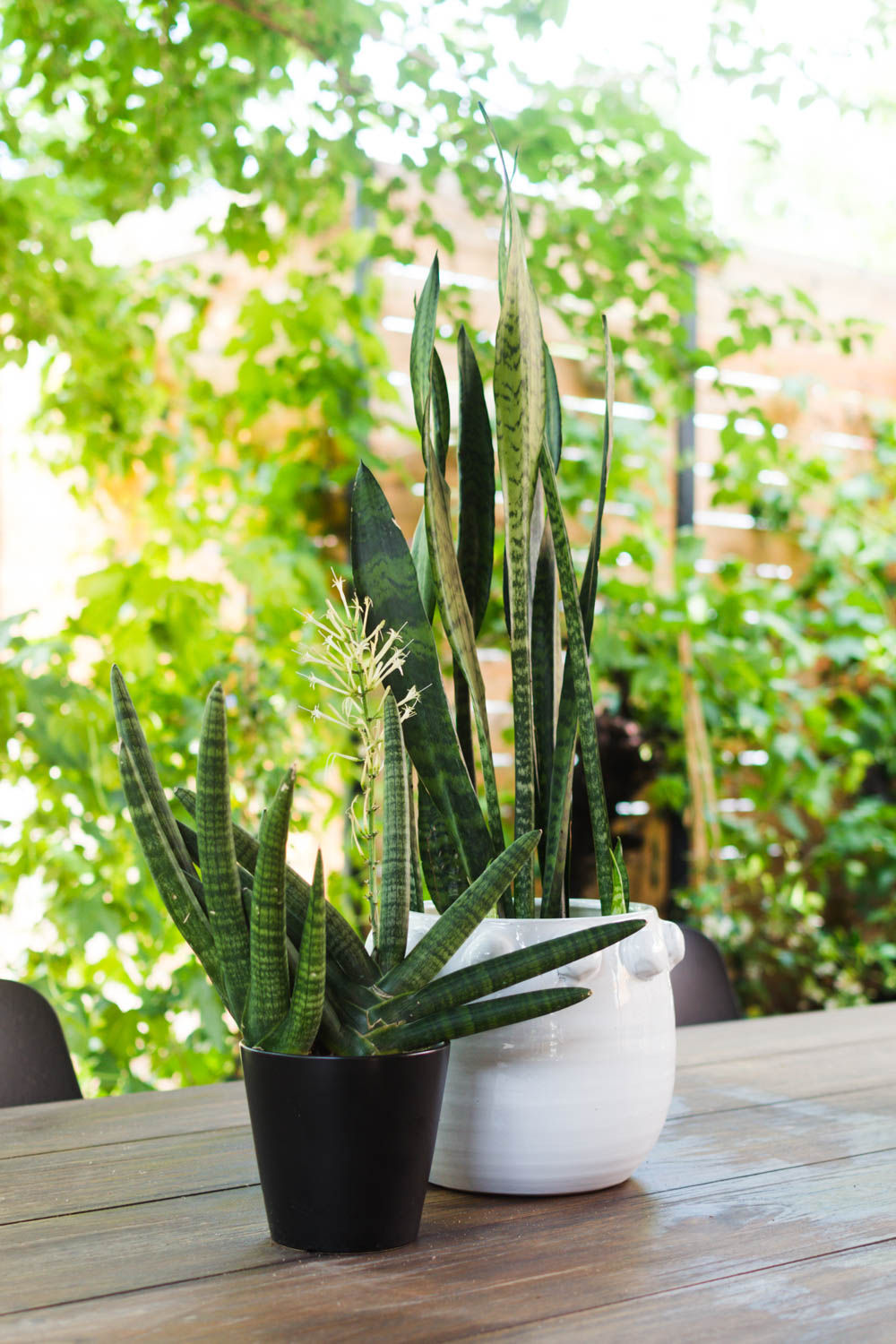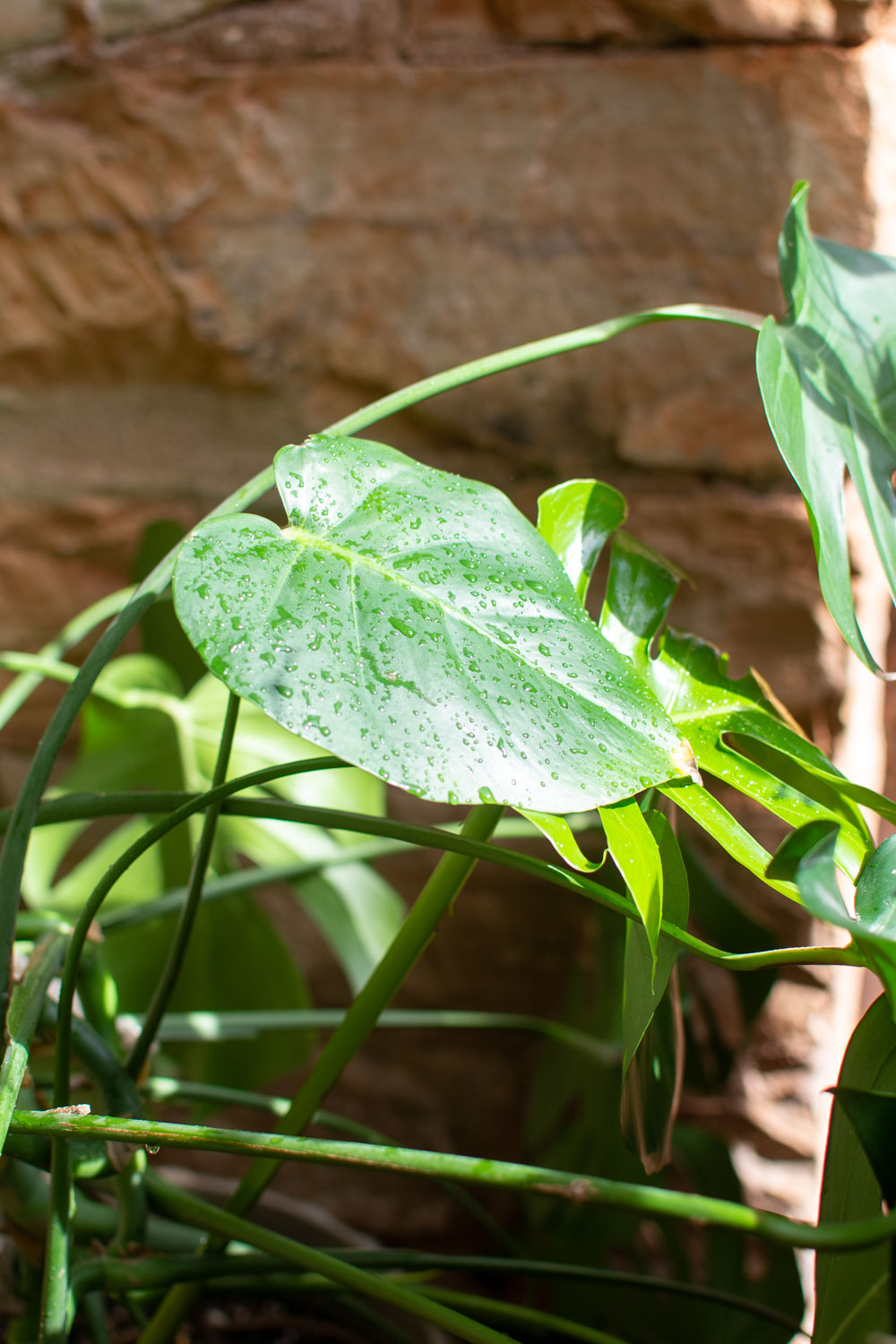Today we’re talking about how to transition your indoor houseplant outside for the summer! I can count on one hand the number of times I’ve had a guest poster on Vintage Revivals, but I just HAVE TO introduce you to my friend Amy. She is a plant guru and I begged her to share some of her plant knowledge with you!
Hello Vintage Revivals readers! I’m Amy from Delineate Your Dwelling, a lifestyle, home decor + craft blog. I was a landscape architect for 8 years before starting a creative blog and my passion for all things green runs DEEP. And I’m excited to share a little bit of plant knowledge with you all today.
As the weather becomes warm and the sun stays out a little bit longer each day, all I want to do is spend my time outdoors. Other than grabbing a good book and sipping on a delicious glass of lemonade, I love tending and caring for my outdoor plants. But are you ready for this?? You can move many of your indoor plants outside for the summer months! It’s so exciting to know that with a few key steps, those sweet little green babies can soak up that summer sun right along with you.
Let’s dive into some of the most important things to know about transitioning your plants from indoors to outdoors for the summer.
Which plants do best making that transition to living outdoors?
Take a quick assessment of your indoor plants. Do you have a delicate air plant that you really have to baby along? Is your snake plant one that you can just forget about for weeks on end? Knowing your indoor plants and their needs is the first step to knowing if they will #1 survive living outdoors for the summer, but also #2 if they will thrive outdoors.

What methods are best for transitioning indoor plants to the outside?
This is somewhat dependent upon where you live. When the outside temperature at night are consistently above 55 degrees fahrenheit, it should be safe to start transitioning your plants. However, if you see a wild night is coming up with temperatures below 55, bring them back indoors for the night.
Once you are sure the night time temperatures are warm enough, it is time to start transitioning your plants outside. Take all the plants you intend to move outdoors and put them in full shade. You could put them under a big shady tree, near an overhang or even a covered back patio. Indoor light is much weaker than outdoor sunshine. Even plants in full shade still get more intense sun than when they were in direct window sun inside. Plants can burn if placed in outdoor direct sunlight too quickly.
After two weeks in shade, you can start to move your plants to their appropriate outdoor light needs (full sun, semi sun + shade). If you had succulents, cactus and fiddle figs in high light indoors, they are now be okay in full sun outside. Medium or low light plants should stay in full shade or semi shade outdoors. And all your low light plants should stay in full shade outside.
Tip: Learn all about my favorite low light plants!
Any care needed to pots or containers to prep for outside?
The most important thing to be concerned about the pot or container when moving outside is drainage. If your planter does not have a drainage hole, you should either leave your plant indoors or get a new pot. Unlike inside where you determine how much water to give your plants, outside Mother Nature may rain down for a full day and could drown plants without proper drainage holes.
Trouble items to lookout for after they have made the move to outside
The basic things to be aware of when you move plants outside are sun, wind and rain.
Your plants will probably dry out much faster outside than they had previously due to the direct sunshine they will be receiving. Be sure to keep an eye on your plants watering needs.
Being outdoors, your plants will also experience wind, which is another determining factor of drying out. Dry plants can also be more easily knocked over during the wind.
The watering needs of your plants may slightly change now due to things like the sun, wind and rain. So, you may be watering a little more than normal or a little less if there was a recent rainstorm.
Perks of bringing your plants outdoors
Most houseplants enjoy getting some fresh warm summer air after being indoors all fall and winter. And will often encourage substantial growth during the summer. Even if your plants are not ready for the full time outdoor lifestyle, bringing them outdoors for a nice hose down and an hour or so of sunshine might be just the thing they need!
Thanks again for having me, Mandi. And if you all would like to follow along, I’d love for you to say hi and tell me your favorite plant.
Delineate Your Dwelling| Instagram| Pinterest| Facebook
You might also enjoy these crafty plant posts of mine : Gold Foiled Vase| Clay Plant Holder| Can’t Touch This print| Modern Day Terrariums| His + Her DIY Face Vase
[mv_create key=”2″ type=”list” title=”The Essential Houseplant Master List ” layout=”circles”]


